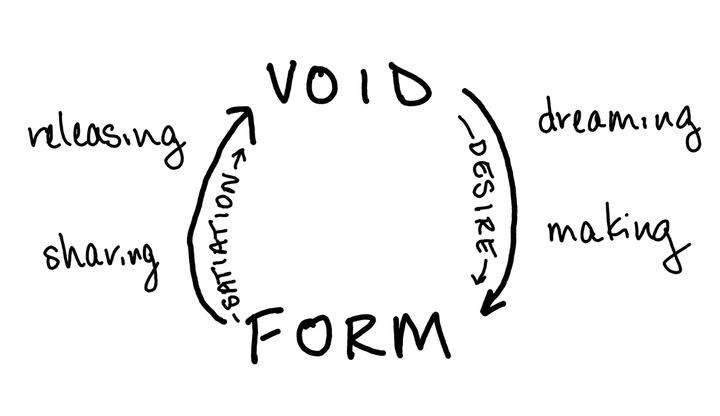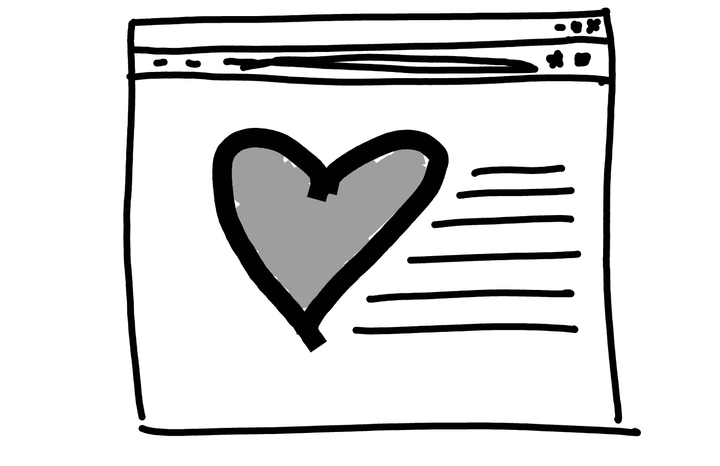What is it about a good workbook?
That satisfying feeling of turning to the first exercise, with that virtuous thrill of embarking on a journey that will no doubt transform you in the exact ways the book’s title promises.
What is it about a good workbook?
That satisfying feeling of turning to the first exercise, with that virtuous thrill of embarking on a journey that will no doubt transform you in the exact ways the book’s title promises.
The satisfaction of having structured blank spaces for your answers, visual cues to tell you when you’ve written a satisfying amount. The ability to flip through and see what you’ve done and left undone. The desire to not skip anything over.
A notebook and a book with a list of exercises can never compete with a well-designed workbook!
With a notebook, you can cheat: “Oh, I don’t need to write that one, I already thought about it in my head.”
With a notebook, you can skip the hard questions without their blank spaces glaring at you each time until you fill them in. (And if you do fill in the hard ones, well, it all looks the same in a notebook anyway. Not as much satisfaction.)
Maybe I’m the type of person who just wants to get on a train and be carried to my destination. Maybe we all are. A workbook is like a train—you have to do some work, perhaps, but the destination and route are all set for you.
Perhaps reading a regular book and trying to apply it is more like driving. This road or that one? Is it time to stop for a snack? Too many decisions, not enough validation.
But just like there are books that shouldn’t be books, there are workbooks that shouldn’t be workbooks.
Graphic design matters if you’re going to go this route. It’s a train. People want scenery, they want a certain aesthetic experience. They want an aesthetic that provides pleasure and satisfaction, and more importantly, makes them feel like they are in competent hands.
Educational theory matters too. Remember not to start too high level. People might be feeling a little overwhelmed when they open the workbook. Maybe deciding they are in need of and ready to commit to the transformation the workbook promises has eaten a certain amount of their emotional energy for the day. They need some quick wins. Maybe some short-answers, some checkboxes, something concrete that they feel they can’t get wrong. (Don’t worry if this feels too simple. You’ll get to the meatier stuff. And all these ideas are new to them. They have to be eased in.)
It’s okay to have blank space. Don’t make the pages too crowded.
Although design matters, there’s no need to go overboard. Avoid graphic flourishes that make it feel as though you’re just trying to pad the content.
How can you build in questions and experiences that allow the reader to see their progress over their time with the workbook?
Should the workbook be a weekly program, like The Artist’s Way? I remember enjoying The Artist’s Way and being careful to not read ahead. I would turn to the new chapter only on Sunday evenings, and would begin the exercises on Monday.
Then again, some things are fun to binge. And I hate daily workbooks because you always miss a day and then sometimes you do want to do several pages at once.
How well do you know your reader? Can you use beta reading or an anonymous online version of some of the questions to get to know your potential readers better? Maybe beta-test in a live workshop?
And of course, never expect people to do workbooks you haven’t done yourself. You can spot those as soon as you try them. Questions that sounded good in someone else’s head but are impossible to answer. Or worse, boring. Those questions where you want to comply and answer them, either so your workbook doesn’t have a blank space, or because you want to trust the process even though the question seems pointless, but ultimately, you feel you’ve wasted your time. (If this is you, try to avoid a negative spiral about your poor judgment in choosing this workbook and suspending disbelief.)
I think I want to try making a workbook.
I’m thinking about which reflection questions and exercises were most helpful to me and why.
I appreciated the breadth of activities in The Artist’s Way.
The Start Finishing workbook had exercises that helped me to understand myself better and break down complex projects. I also liked how it had a variety of page layouts and types of question.
There were many books of writing prompts, but special mentions to Ariel Gore’s The Wayward Writer and Laraine Herring’s Writing Begins With the Breath.
Demetra George’s Astrology for Yourself was written pre-ebooks, although I read it as an ebook. I liked that many of the exercises did involve looking things up and writing them out by hand. I feel that newer books would point you to a website to do these things for you, but then you wouldn’t learn to synthesize this information for yourself or become as familiar with it.
(People learn through repetition. Maybe repetition isn’t to be feared in creating a workbook.)
Be clear on the transformation you want to create.
Start simple. If it feels too simple to you, it’s probably good.
Pay attention to graphic design.
Build in ways for the person to experience the way they’ve changed throughout working on the book.
Use beta readers! (And ask them the right questions!)
Think about your best workbook experience—and try to create that blend of delight and studious progress for someone else.


